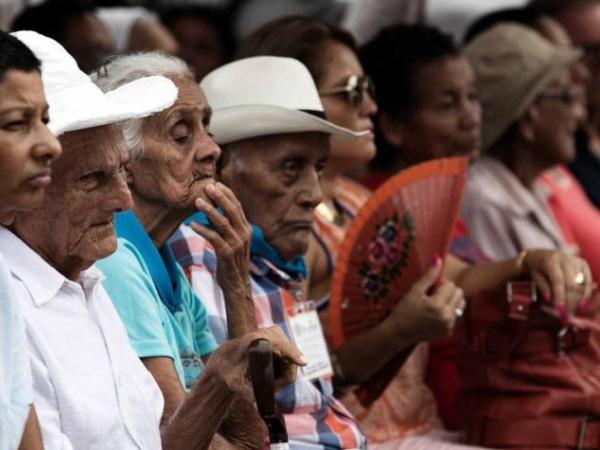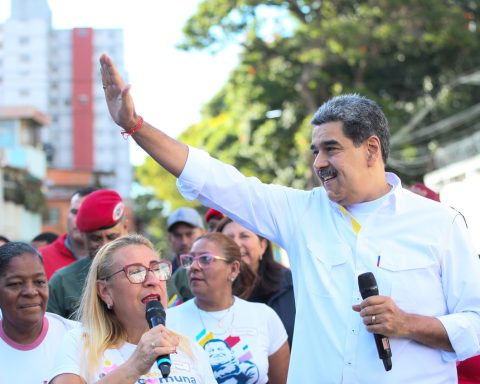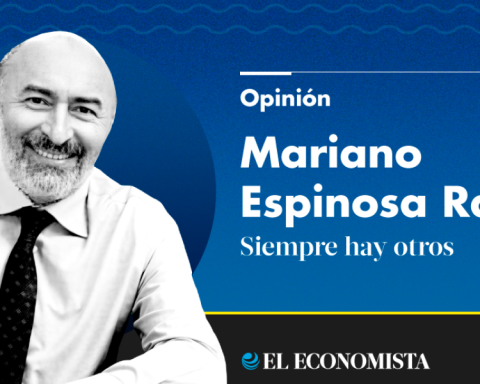When talking about the tools with which the State faces problems such as poverty or inequality and leverages to materialize its development and economic growth plans, both at national and regional level, one of those that undoubtedly stands out is social spending, which It is nothing other than the resources that are allocated to the care of less favored communities.
For reading: Almost 30% of the Government’s investment in 2025 will depend on the Financing Law
Through this, the different governments manage to implement their social policy on issues such as poverty reduction, hunger eradication, guaranteeing access to education, public utilities and promoting actions for decent housing or job creation, among others. Although this is mostly state-run, it is also promoted by the private sector.
Colombia Mayor – Older adults.
Courtesy – DPS
Simply put, social spending is defined as the mechanisms by which resources are allocated to the less favored sectors, thus allowing them to improve their conditions and favoring the equitable redistribution of the country’s income. Such spending allows inhabitants with a lack of opportunities to acquire those resources and capital that allow them to improve their quality of life.
How is it being distributed?
A recent report by Dane reviewed how this sector of the economy is currently being broken down, both in the public and private sectors, and found that care for the elderly, health and family programs currently account for more than 90% of these resources.
More information: Global skepticism: countries that rejected Venezuela’s election results
By 2023, according to the report of the statistical authority, social spending in Colombia was $269 billion, a figure that initially marks a growth of 14.8% compared to the $234 billion in 2022. Of this amount, according to the type of financing, $227 billion came from the public sector (84%); while $25 billion came from the private sector (mandatory), which is equivalent to 9.2%, and the remaining $16 billion are private, in the voluntary category.
While most of the large increases were on the state side, social spending from private sectors also reflects an increase compared to previous years and maintains the upward trend of recent years. If we compare the records for 2022 and 2023, this marks a variation of 17.8%, which is even greater than that of the public sector.

Poverty in Colombia
Milton Diaz
Health and old age
In the case of financing of social spending by the State, Dane data shows that $90.9 billion were allocated to health last year, thus increasing by 18.5% compared to the $76.7 billion presented in 2022. This is followed by old-age policies ($89.6 billion), Family ($28.8 trillion) and labor market programs, with $6.7 trillion.
If the first three lines of social spending in the public sector are added together, it is clear that family, old age and health programs demanded 91% of the resources allocated for this purpose last year. On the other side of the coin are housing programs ($3.3 billion), disability ($1.4 billion) and unemployment ($0.1 billion), with the lowest allocations from the State.
In other news: ‘More is less’: the secret to success when sending job applications
Misael Triana Cardona, lawyer specializing in Social Security Law, He argues that in the case of old age, this may be supported by some variables, such as generational changes, although it shows that there is solid coverage in pension issues for older adults, mainly from the aid currently provided by the State.
“Members of the system under Law 100 have managed to maintain their contributions to the pension system constantly until reaching the goal, among other things, due to the occupation they have had or the regulations that forced many citizens to join the system and pay their contributions (Example: taxi drivers, independent workers – capital investors),” he said.
A heavy load
Although these figures show that care for the elderly is on the right track in terms of social spending, for this expert it is important not to lose sight of the fiscal burden that this is generating, since it can also be interpreted as an increase in the population that requires these resources.

Will Colombia be the country that tops the list of Latin American countries with the best minimum wages? Find out.
iStock
“The more pensioners there are, the more the principle of financial sustainability must be reinforced and reconsidered to ensure the payment of pensions over time. Clearly, coverage and financing are principles that remain in tension and this is entirely logical economically, since the more pensioners there are, the more resources are required to pay the pensions, although this is not a situation that is currently being addressed by the Government,” said Triana Cardona.
Thus, the balance of social spending should serve as a wake-up call. a warning for the National Government, which needs to think of new ways to finance this demand for resources, which will be necessary as long as social problems such as poverty, hunger and inequality persist.
You may be interested in: Does yours do it? The main mistake of bosses in companies
“As a scholar and critic of the pension system, I have proposed other forms of financing, including the renegotiation of the financial returns that private funds must report, which, although they have generated profits for the system, have not done so, in what I have called an unbalanced business, with the funds taking most of the profits, allowing members to access better returns, in a business that for me has been good for members, but extraordinary for the funds,” he concluded.
In all this, it must finally be said that social spending for the private sector was $25 billion, of which $11.4 billion also went to care for the elderly, covering almost 50% of this item. After this come benefits related to disabilities ($4.7 billion), attention to family programs ($4.2 billion) and health ($3.5 billion), according to Dane calculations.

















